Lucille Ball’s Unlikely Protector: The Schipperke, The Tiny Dog As Fearless As a Doberman
When you imagine a guard dog, you probably imagine a 90-pound German Shepherd or a formidable Doberman Pinscher. Sure, these breeds make great watchdogs, but what if we told you there’s an equally attentive, fearless, and intelligent breed that weighs less than 20 pounds?
Meet the Schipperke—a Belgian ratting dog turned watchdog with a reputation for boundless energy and incredible loyalty to their humans. Fans of the Schipperke are equally loyal, and many owners of the breed say they will never be without one. Famously, Lucille Ball and Desi Arnaz owned several Schipperkes, the most famous one paradoxically named Ginger, and the breed has even appeared in the homes of European nobility and royal families.
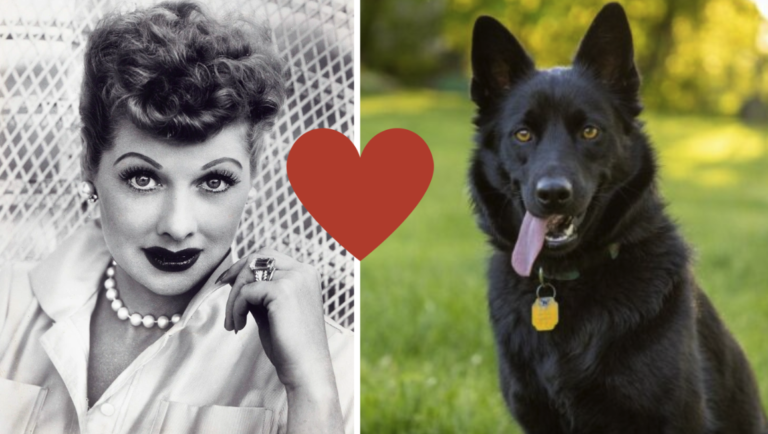
Not a breed to be underestimated, what the Schipperke lacks in size it more than makes up for in determination and personality. First-time and novice dog owners beware, the Schipperke runs circles around even the most experienced dog trainers!
In this guide, we’re diving deep into what makes this tiny guard dog so widely beloved, and what it takes to make a Schipperke part of your family.
Meet 6 Schipperkes from Instagram
Schipperkes are a unique small breed and are far more robust than other dogs of a similar size. Broad, muscular shoulders and a robust chest and forequarters give the Schipperke power and stamina, and their adorable little fox-like faces and pointed ears help them detect and quickly nap rats and mice. Schipperkes have a thick double coat which serves to protect them against scratches and bites from small prey, water and moisture, and extreme temperatures.
Let’s take a look at a few examples of the Schipperke so you can see just how unique this breed is.
1. Neri
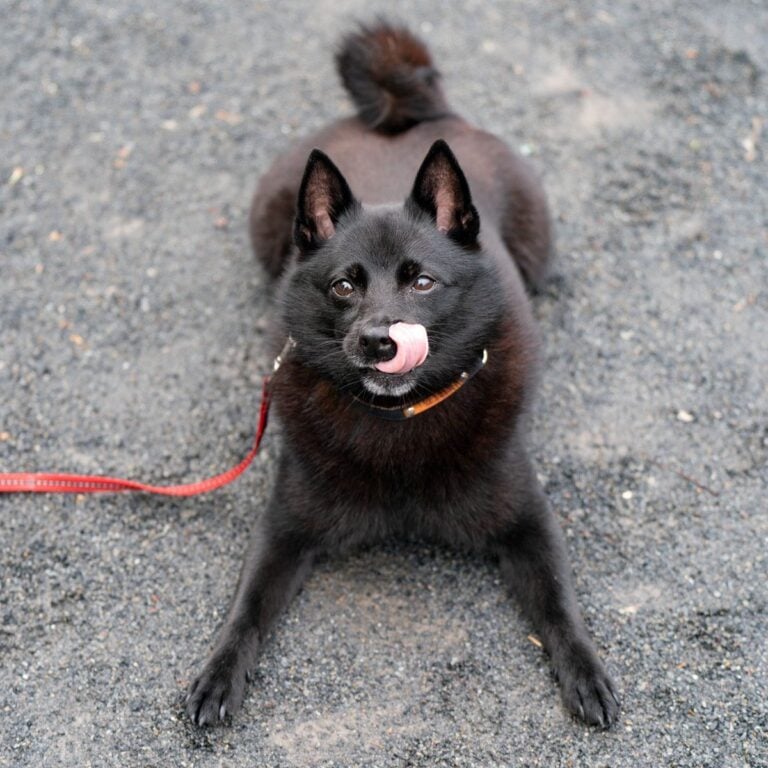
Neri is an adorable Schipperke from Japan with a natural tail and the most gorgeous red hue to his shiny black fur. Isn’t he just darling?
2. Aiko
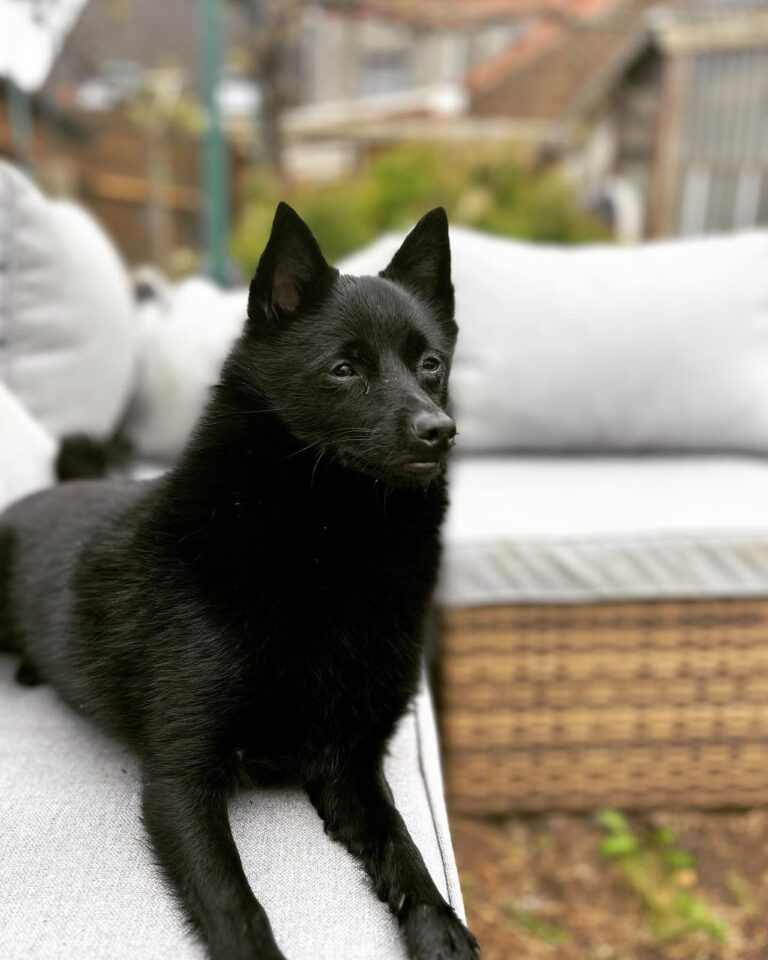
A Schipperke from Belgium, Aiko is two years old and likes to eat, sleep, cuddle, play, and repeat! Aiko is great at sniffing out the most comfortable spot whenever he is, but even when he’s resting he’s alert and on the watch.
3. Ben

Have you ever seen a Schipperke smile? Now you have! Ben is a 12-year-old Schipperke who loves to show off his pearly whites for treats, pets, or compliments.
4. Mochi
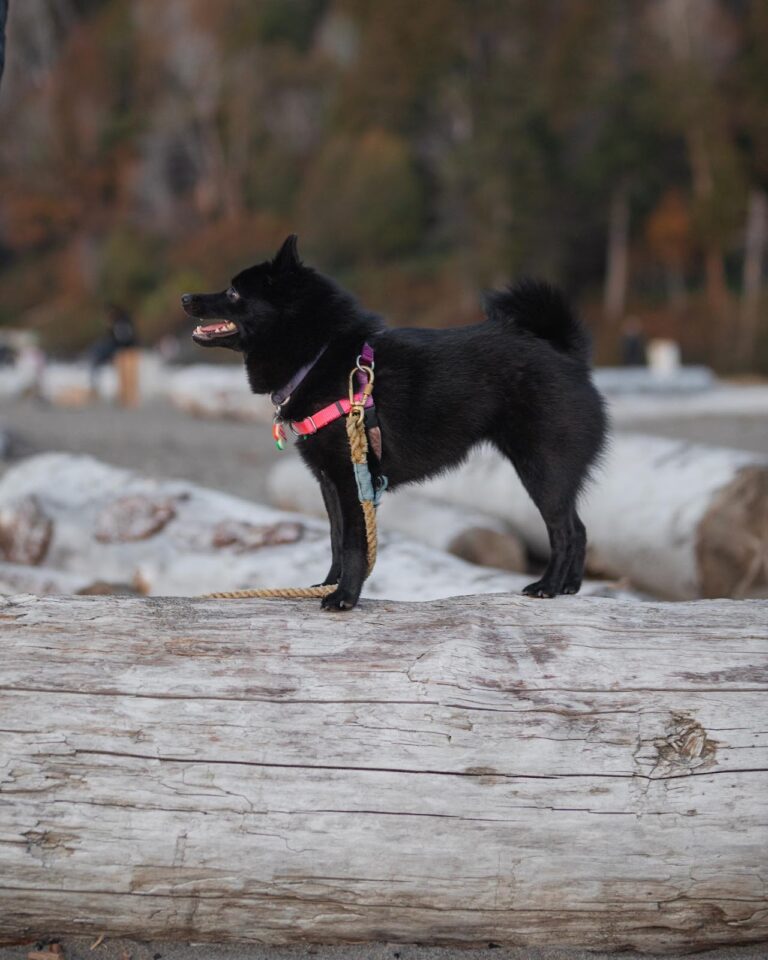
Mochi is doing a fantastic job of showing off the unique physique of the Schipperke—take a look at that strong, thick chest and neck, the compact body, and the fox-light face! Mochi also has a beautiful natural tail.
5. Maximus
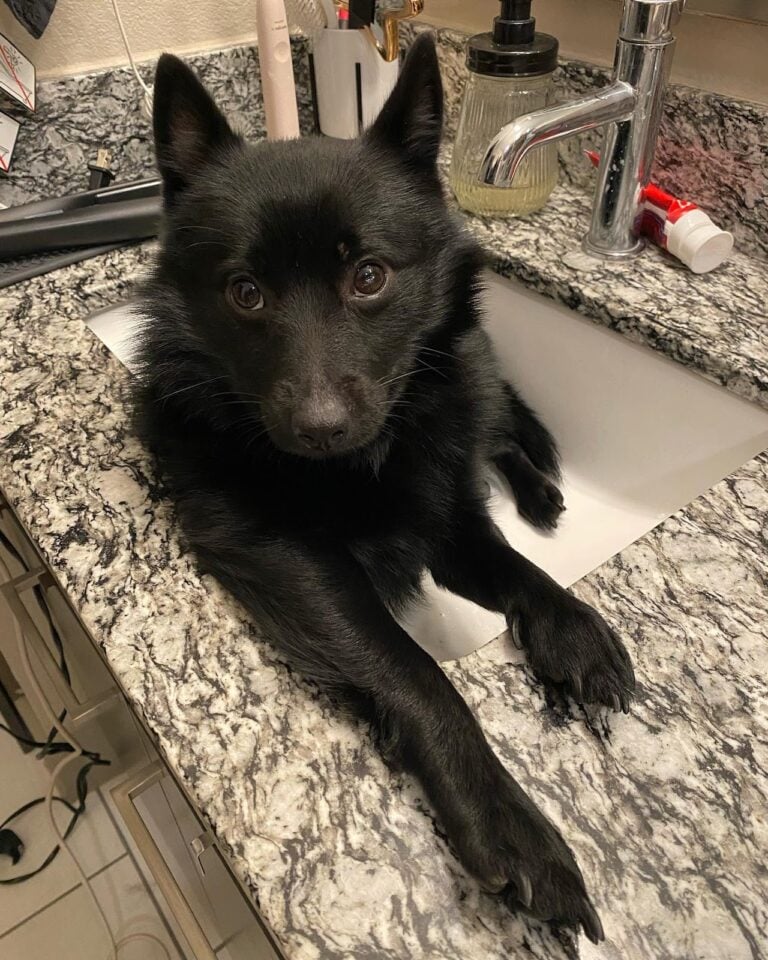
Maximus—Mus, for short—is a two-year-old Schipperke from Texas whose humans describe him as an “angel baby”! Some people say that Schipperkes look like fruit bats or flying foxes—what do you think?
6. Whisky
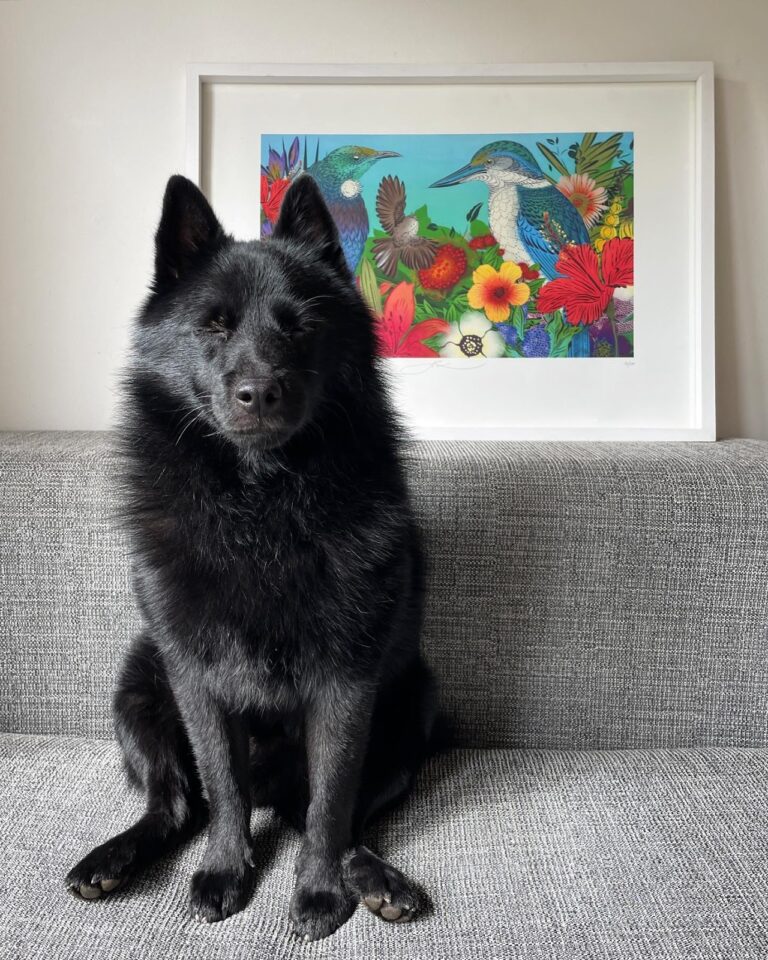
Another animal Schipperkes are often compared to is the black bear, and we can say with certainty that Whisky is a total teddy bear lookalike! Whisky’s humans say he is royalty and have given him a title befitting of his name: King of Barking at Everything, Master of Wanderlust (& Destruction), Stealer of Things, and Breaker of His Pawrents.
Schipperke Dog Basic Info
The Schipperke dog hails from northern Belgium, bred as a ratter dog to keep ships, shops, and farms free from plague-carrying and produce-scrounging mice and rats. Descended from a variety of now-extinct black sheepdog called the Leauvenaar—which is also an ancestor of the Belgian Sheepdog—the Schipperke was bred to be compact, athletic, and brave. Their determined loyal personalities also made them fantastic watchdogs.
The name ‘Schipperke’ comes from the Flemish word for boat—schip—which helped earn the breed the nickname “Little Captain” or “Little Skipper.” Today, the nickname “little black devil” is more commonly used for this breed, a name in honor of the Schipperke’s fearsome and fearless personality. Despite their “working dog” status, Queen Marie Henriette of Belgium was pivotal in popularizing the breed and helped to turn Schipperkes to everyday pets throughout the 19th century.
If you think you’re up to the challenge of owning this delightful small breed, keep on reading—we’re sharing key advice and information on Schipperkes and their needs.
Schipperke Temperament
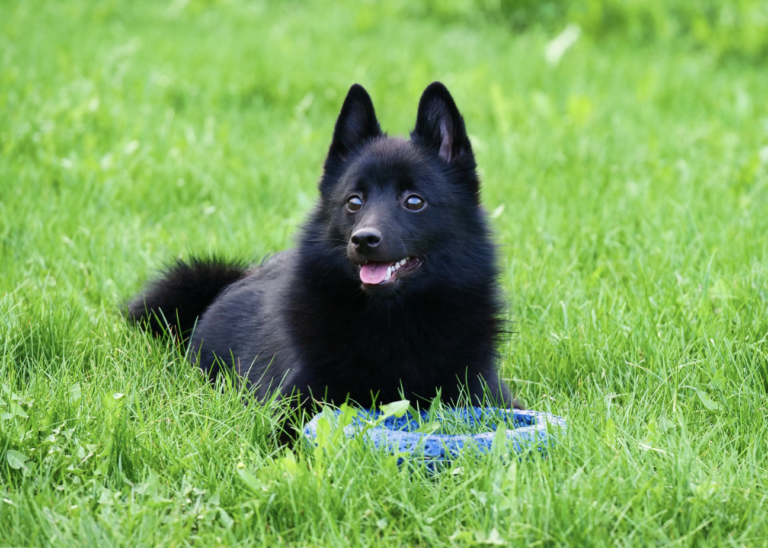
The Schipperke personality is not necessarily unique amongst small dogs from working backgrounds but might be described as amped up a level in intensity.
“[Schipperkes] are terrific dogs but you have to train and engage them. A spoiled Schip is awful and nobody wants to be around them. They are super stubborn/wilful and if they see an inch of daylight, they’ll zoom right thru [SIC] the door and into traffic. I had to chase mine down the street in my PJs in -2 degree weather this AM. My house guest was loading the car and [my Schipperke] saw a chance to escape, the little sh*t. However, if all goes well, you’ll have the most wonderful, unforgettable dog ever.”
Reddit user
Schipperkes are high-energy, athletic, and determined little dogs who will test every boundary. Notorious escape artists, Schipperkes are not a breed that should be walked off-leash or allowed in an unfenced yard. Curious and mischievous, the Schipperke loves to investigate sights, sounds, and smells and will happily wander off in pursuit of adventure.
Intense and sometimes territorial, Schipperkes are fierce and strong little dogs but make remarkably affectionate family pets. Some can be nippy and mouthy both during play and as a communication tactic, which may not work well in homes with small children. Schipperkes do not enjoy having their space invaded, and are not a patient breed—this means that Schipperkes will quickly “correct” other dogs, children, and even adults if they don’t like their behavior. This said, many Schipperkes form very close bonds with kids in their families and will go to great lengths to protect them.
“[My Schipperke] is good with kids that have respect and aren’t crazy. Erratic kids piss him off and he doesn’t take kindly to those not respecting his bodily autonomy. He wasn’t raised with kids though, so that might make a difference.”
Reddit user with children
Despite being intelligent and quick to pick up on commands, Schipperkes are not easy to train and often choose to ignore their owners if their focus is on something more interesting. First-time dog owners and those inexperienced with wilful breeds should steer clear of the Schipperke, but anyone looking for a challenge will certainly find it in this breed. Once you develop a bond with a Schipperke, you’ll have their lifelong love and loyalty, guaranteed!
Schipperke Size
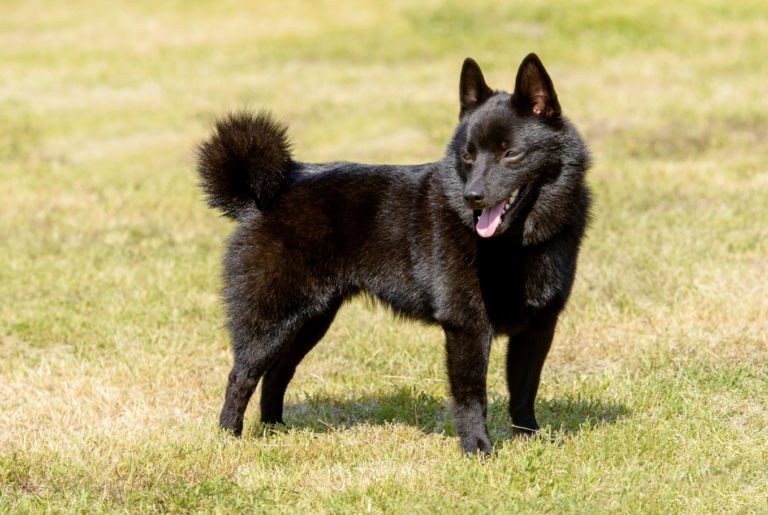
The Schipperke is a small breed standing only 10–13 inches at the shoulder and weighing around 10–16 pounds. Muscular, stocky, and powerful for their size, Schipperkes don’t let their status as little dogs stop them from showing everyone who’s boss.
Schipperke Health
When bred by responsible breeders who screen for genetic predispositions in their mating pairs, Schipperke dogs are generally healthy with a long lifespan. Unfortunately, some individuals of the breed are still prone to several health issues, including:
- Joint problems (e.g. luxating patellas, Legg-Calve-Perthes disease)
- Eye and vision issues (e.g. cataracts, progressive retinal atrophy)
- Thyroid problems (e.g. hypothyroidism, hyperthyroidism, autoimmune thyroiditis)
- Epilepsy
- Heart disease
- Mucopolysaccharidosis IIIB
Mucopolysaccharidosis IIIB is a fatal genetic disorder that requires euthanasia within two years of onset. Reputable and responsible breeders will test for this condition which is carried by a recessive gene.
Where To Find a Schipperke Puppy
If you want to buy a Schipperke puppy from a breeder, it is incredibly important to do your research and choose a reputable, ethical option. Schipperkes are prone to several genetic conditions that are avoidable with the proper testing and breed pairings. Ethical breeders are focused on producing healthy, happy puppies and don’t produce constant litters like profit-motivated backyard breeders and puppy mills.
To find an ethical Schipperke breeder near you, we recommend starting with the AKC Breeder Marketplace or the Schipperke Club of America breeder database.
You can also find Schipperke for adoption if you would rather rescue than buy from a breeder. Schipperke adoption is usually facilitated by breed-specific rescues that specialize in Schipperkes and Schipperke mixes. Click here are a few resources for Schipperke rescue groups around the US courtesy of the SCA.
Schipperke Dog FAQ
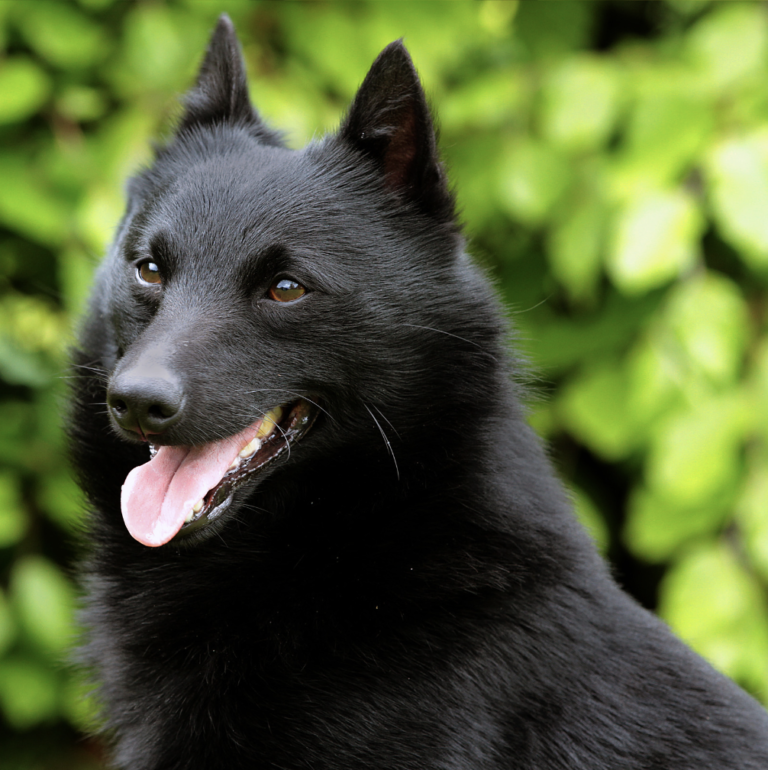
A fascinating breed, there’s a ton to learn about the Schipperke! Now that you know the basics, let’s dive into some specific questions about Schipperke dogs and what life with this small but mighty breed looks like.
How do you pronounce ‘Schipperke’?
Schipperkes originate in Belgium where the correct pronunciation for the breed is SHEEP-er-ker. In the United States, the Schipperke’s pronunciation is a little different. US breeders and owners of these small black dogs usually call them SKIP-er-kee. Both pronunciations are accepted.
What are the accepted Schipperke colours?
Kennel clubs like the Schipperke Club of America and the American Kennel Club accept only one standard Schipperke color: solid black. Schipperke dogs have a double coat, and the outer guard hairs must always be natural black. The undercoat of a Schipperke can be slightly lighter while still meeting breed standards and may appear reddish during periods of heavy shedding.
Although the black coated Schipperke is the only color allowed in dog shows, other unofficial Schipperke colors exist. For example, you may encounter cream Schipperke, white Schipperke, apricot, blue, fawn, black and tan, etc.
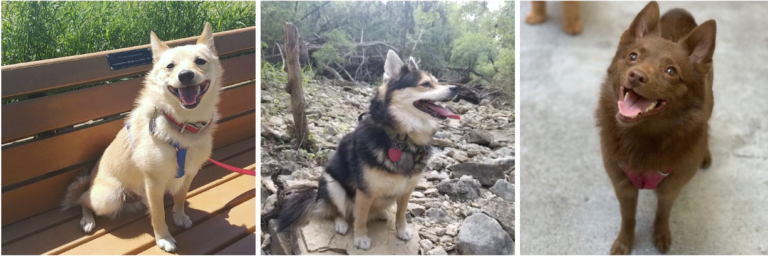
Sources: @Zelda.Mariee, @TokalaTheSchipp, and @Lulu_The_BrownBear
What is the average Schipperke price?
Schipperke puppies from a reputable breeder typically cost around $700–$1,200.
Do Schipperkes shed?
Yes! Schipperkes are moderate to heavy shedders and experience bi-annual coat-blowing where their shedding increases and they release large amounts of undercoat.
Are Schipperkes hypoallergenic?
No. Schipperkes are not hypoallergenic—in truth, no dog breed is 100% hypoallergenic. No, not even Poodles.
Do Schipperkes need to go to the groomer?
Sometimes. Weekly brushing can keep the Schipperke’s regular shedding under control, but a trip to the groomer for a deep cleansing bath, a brush out, a blowdry, and some extra pampering can help reduce the amount of fur you deal with when they blow their coats. The medium length of their coat is relatively manageable at home and surprisingly low maintenance, but one or two trips to the groomer per year can be very helpful for shed management.
Are Schipperkes good with kids?
Sometimes! Most Schipperkes are excellent family dogs who love kids, but it’s also important to remember that Schipperkes are small dogs, which makes them more vulnerable to accidental injury. Some Schipperkes prefer older, more self-aware children and may become reactive or nippy around little kids. Every Schipperke is unique just as every child is unique, so use your best judgment.
Do Schipperkes bark a lot?
Yes! Schipperkes are very vocal and were at one time used as guard dogs protecting merchant boats and local shops from thieves. Because of their diminutive size, these small black dogs needed to have a big voice to scare off intruders and alert their humans to the issue.
What is the average lifespan of a Schipperke dog?
Long-lived dogs, most Schipperke have a life expectancy of around 12–16 years.
Are Schipperkes good for first-time dog owners?
No. Nicknamed the “little captain” or the “little black devil,” Schipperkes are feisty, bossy, opinionated little dogs who will push boundaries and can easily become reactive in the hands of an inexperienced dog owner. Very difficult to train and often stubborn and bad at recall, Schipperkes have a reputation for being escape artists and not only need a fenced yard but a highly attentive owner who is prepared to manage them for their safety.
Do Schipperkes like to swim?
Yes! Once used to exterminate mice and rats onboard Belgian ships, Schipperkes were bred for comfort on and in the water. Many love to swim and are very good at it, and their thick double coats help to protect them from the cold in the water.
Why do some breeders dock Schipperke tails?
Schipperke dogs are born with adorable curly tails, but many breeders choose to dock—or cut off—their tails during their first few weeks of life. Breed standards for the Schipperke consider it a tailless breed, but docking is necessary to achieve this look and not a natural trait. Many people are now choosing to keep the natural Schipperke tails, and many countries have made it illegal to dock tails and crop ears for cosmetic reasons. Unfortunately, tail docking is still common in the US.
What is the best dog food for a Schipperke?
Schipperkes have the same basic nutritional needs as all dogs do, and are happiest on a high-protein diet made from fresh meat (or fish), organ meats, bone, fruits, and vegetables.
The three foods that are super healthy and that almost every dog loves, even the pickiest dogs, are:
1. The Farmer’s Dog.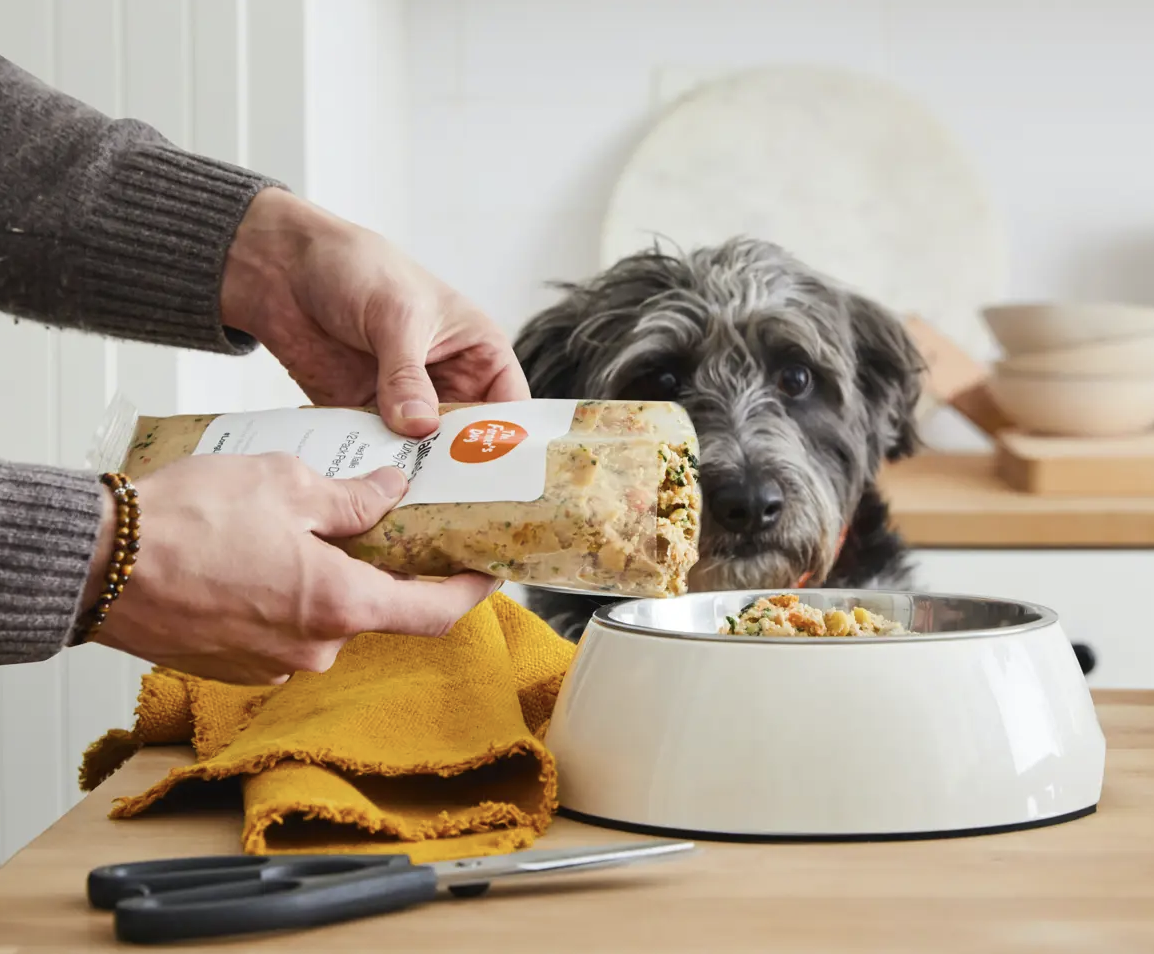
This is a fresh-frozen food that’s delivered to your home in just the right amounts for your dog. There are a number of fresh frozen dog foods available on the market and I tested them all. The Farmer’s Dog came up the winner with my picky dogs. You can see the fresh frozen food test here.
Save 60% on your first order
—
2. Sundays Food For Dogs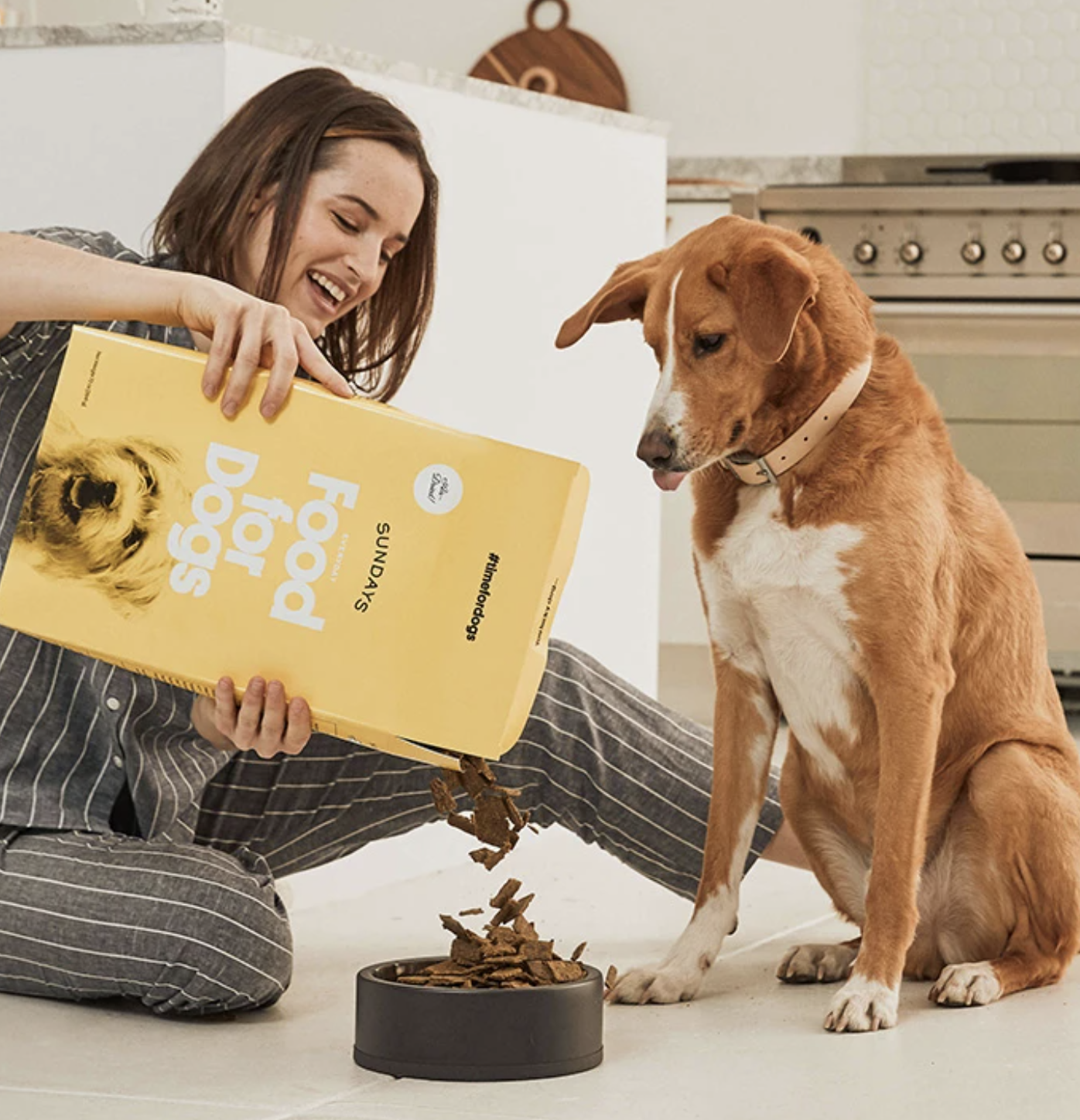
This is an air-dried food. It has the convenience of kibble (just pour it in the bow) but is much much healthier. It’s like little pieces of jerky, so dogs go crazy for it. There are a number of air-dried foods on the market. My dogs tested 3 of them. You can see the results of the air-dried food test here.
Get 35% off your first order + free shipping w/ code ROCKY35
3. We Feed Raw.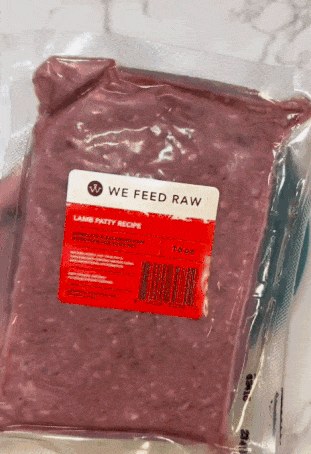
This raw food for dogs comes delivered to your home is perfectly sized portions for your pup. They primarily source their ingredients from trusted U.S. farmers, with two exceptions: venison and lamb. These ingredients are sourced from New Zealand, where some of the highest-quality and most ethically raised venison and lamb can be found. Pasture-raised and grass-fed and finished, we highly recommend trying these formulas if you’re interested in the best-quality ingredients. Save 25% on your first order.
Supplements: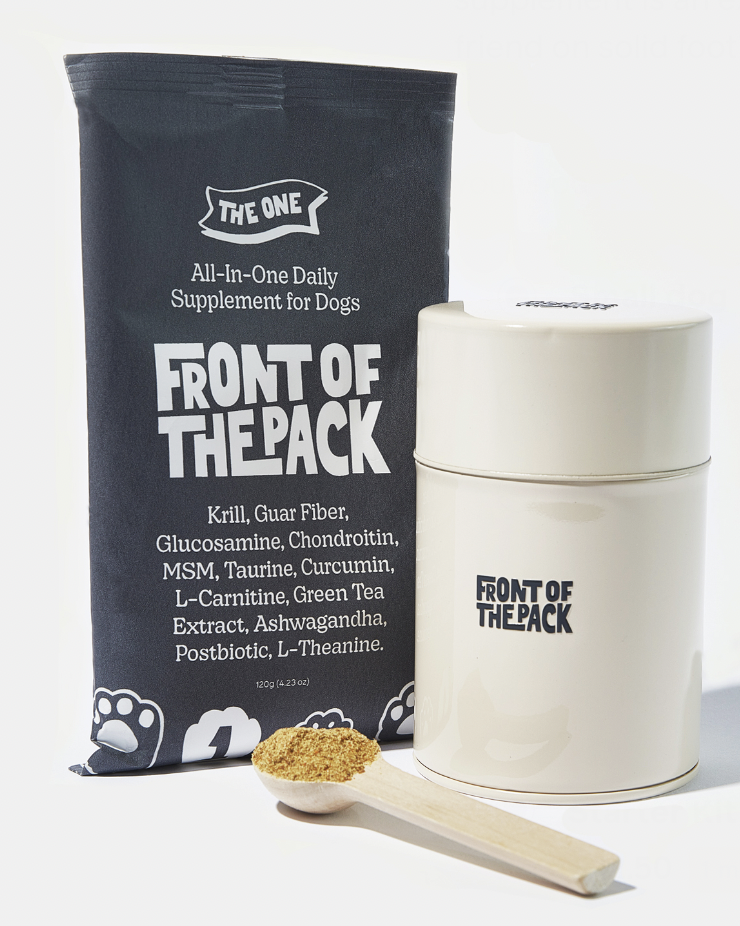
I highly recommend using a supplement on your dog’s food, not matter what you feed them, to ensure the meal is balanced and they are getting all the right supplements to help them stay healthy. The supplement I use is called The One from Front of the Pack. It has 12 ingredients that have been clinically-proven to keep your dog’s joints, skin, heart, digestion, and even their breath in tip-top shape. It’s also a powder, so easy to sprinkle on your dog’s food. For a limited time, when you buy one month you get a second month free.
Related Articles:
- What Breed is the Famous Target Dog Bullseye?
- Outsmarting the Pack: These 4 Dog Breeds Are The Smartest of Them All
- Discover the Daniff: The Gentle Giant of the Designer Dog World



